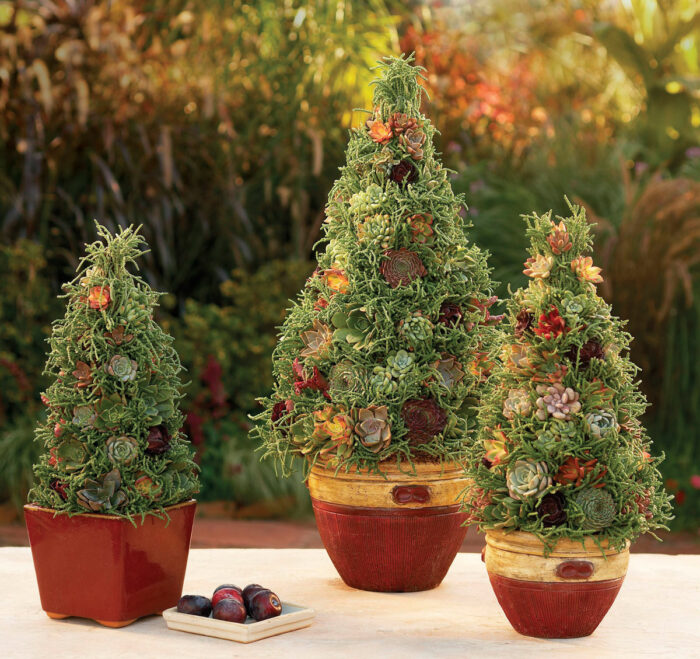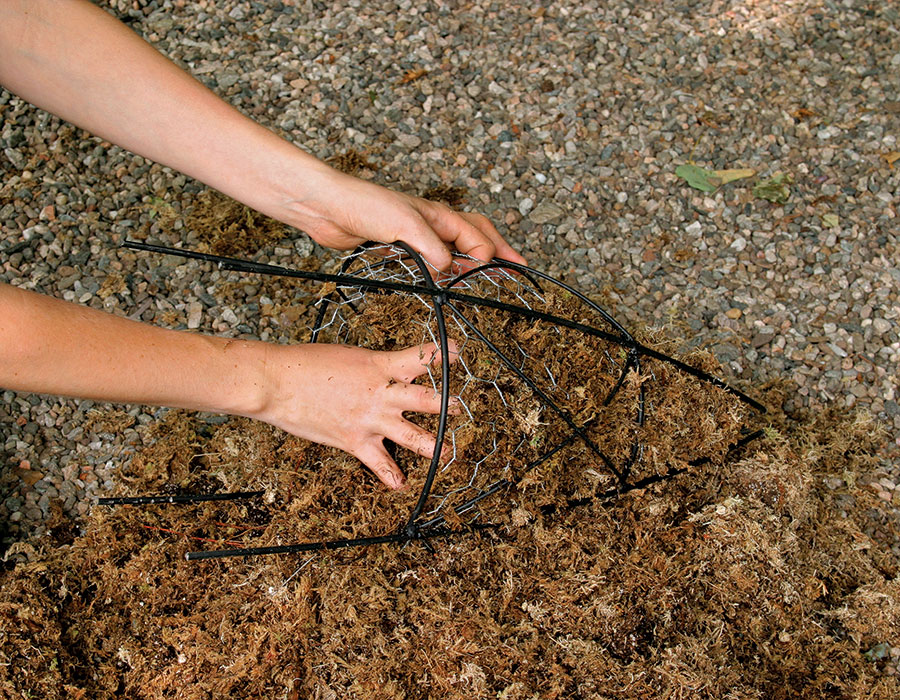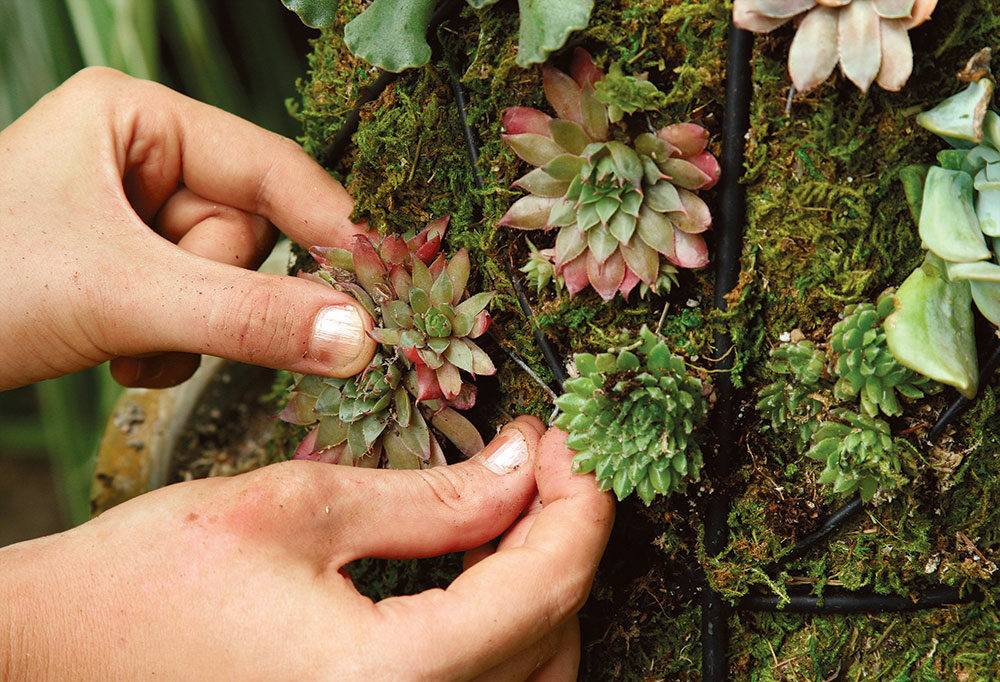How to Make a Succulent Topiary
Grow these trendy plants in a really unique way

A succulent topiary suggests an evergreen tree, yet it makes viewers do a double take. It’s a container garden with a twist: a moss-filled cone planted with eye-catching, low-water, easy-care succulents. This topiary offers a fresh and engaging way to expand your garden artistry. Your palette is a wide range of colorful, fleshy-leaved plants with appealing geometric shapes. Rosette echeveria (Echeveria spp. and cvs., USDA Hardiness Zones 8–11), for example, has a foliage-color range from pink to teal. With widespread demand for succulents, suppliers are increasing availability to meet your needs and satisfy your heart’s desire. Here’s how to create your own succulent topiary. The balance between traditional and trendy is up to you.
Learn more: Creative Gardening With Topiary
What you’ll need
|
|
Step 1: Fill the frame

A. Line the wire frame with chicken wire or wrap it with rustproof wire to create small supportive pockets for the succulents. Stuff the wire frame with moist sphagnum moss or a mixture of the moss and potting soil, or line the frame with an eye-catching succulent, like princess pine (Crassula muscosa pseudolycopodiodes, Zones 9–11).
B. Fill the container with gravel or sand to create a sturdy base. (If the container has a drainage hole, first cover the hole with paper towels to prevent sand from spilling out.) Stab the prongs of the stuffed topiary frame into the sand to secure it.
 |
 |
Step 2: Add the succulents
A. Use the sharp end of needle-nose wire cutters (or a metal rod) to poke holes into the packed moss.
B. Insert the succulent cuttings into the holes, and secure with U-shaped florists’ pins; tuck moss into any gaps. Let the succulents complete the job. Their leaves contain all that the plants will need to survive. They’ll soon put out roots that anchor themselves into the moss. If they don’t find soil and aren’t fed, they’ll go into a kind of stasis. If they don’t find moisture, they’ll drain their leaves.
 |
 |
Care and maintenance
Keep the moss moist to achieve the best results. Water the topiary from the top, or extend a drip tube to the top of the cone. If the moss dries out for brief periods—even a week—the succulents will be fine because they will draw on moisture stored in their leaves.
Forget the fertilizer when it comes to these succulents. Fertilizer will encourage growth that may deconstruct the crisp geometry of the topiary.
Provide full sun in all but the hottest climates. In the Southwest, protect your topiary in summer; position it where it will get bright but not direct afternoon sun. If one side gets sun and the other side does not, rotate the topiary every week or so to ensure even growth.
Protect your topiary in rough or cold weather. If your area gets frost, shelter the topiary indoors or in a greenhouse, or plant it with hardy succulents, such as sedum (Sedum spp. and cvs., Zones 3–11) and sempervivum (Sempervivum spp. and cvs., Zones 4–11).
Prune regularly as the plants grow. They may become leggy, so cut them back and insert the cuttings into gaps, or use them to create a new topiary or potted arrangement.
Debra Lee Baldwin, author of Designing with Succulents and Succulent Container Gardens, resides in Southern California.
Photos, except where noted: Steven Cominsky
Design consultants: Sue and Jim Shriner
Fine Gardening Recommended Products

A.M. Leonard Deluxe Soil Knife & Leather Sheath Combo
Fine Gardening receives a commission for items purchased through links on this site, including Amazon Associates and other affiliate advertising programs.

Berry & Bird Rabbiting Spade, Trenching Shovel
Fine Gardening receives a commission for items purchased through links on this site, including Amazon Associates and other affiliate advertising programs.







Comments
Where can you get smaller sized topiary frames? I've only been able to find really big ones.
Log in or create an account to post a comment.
Sign up Log in